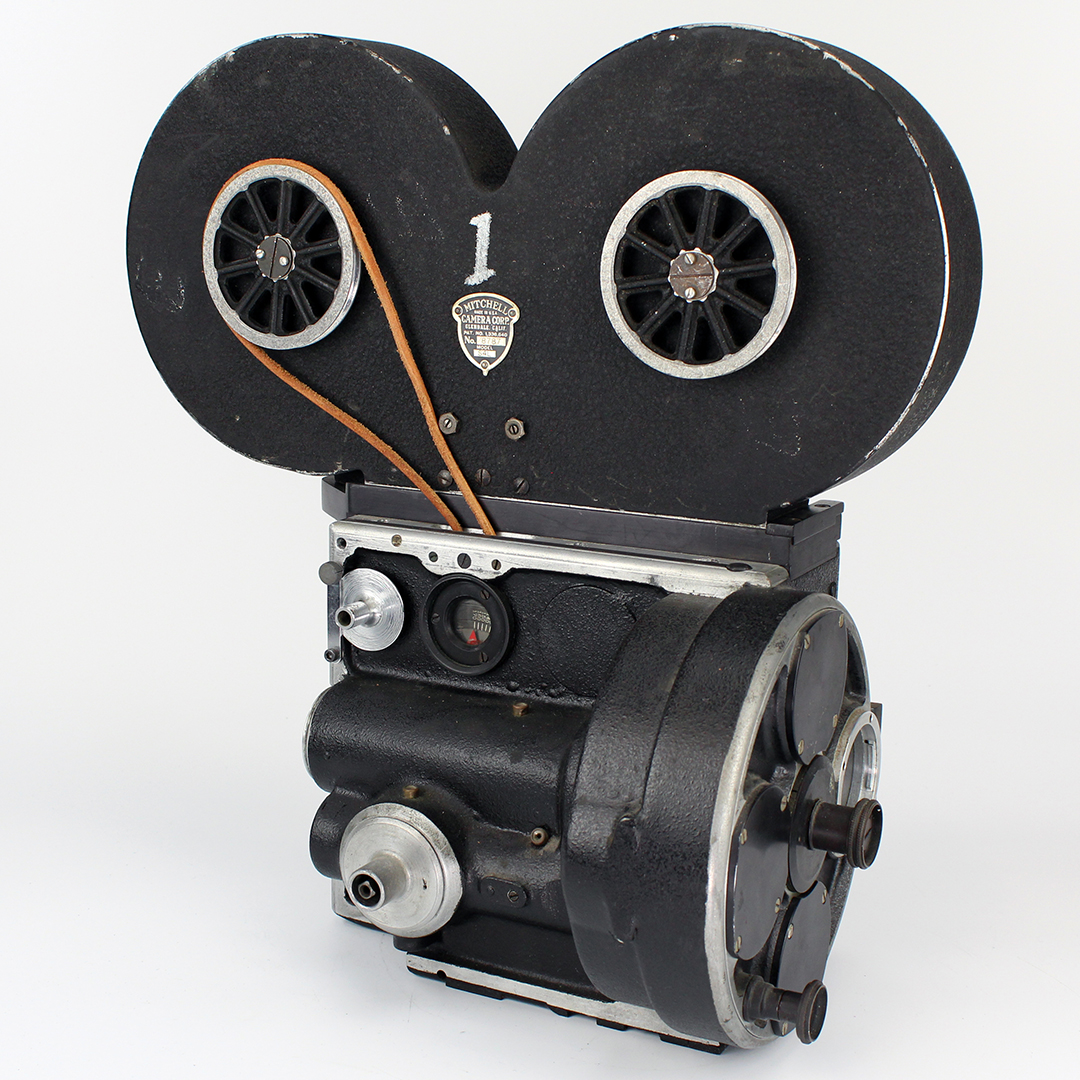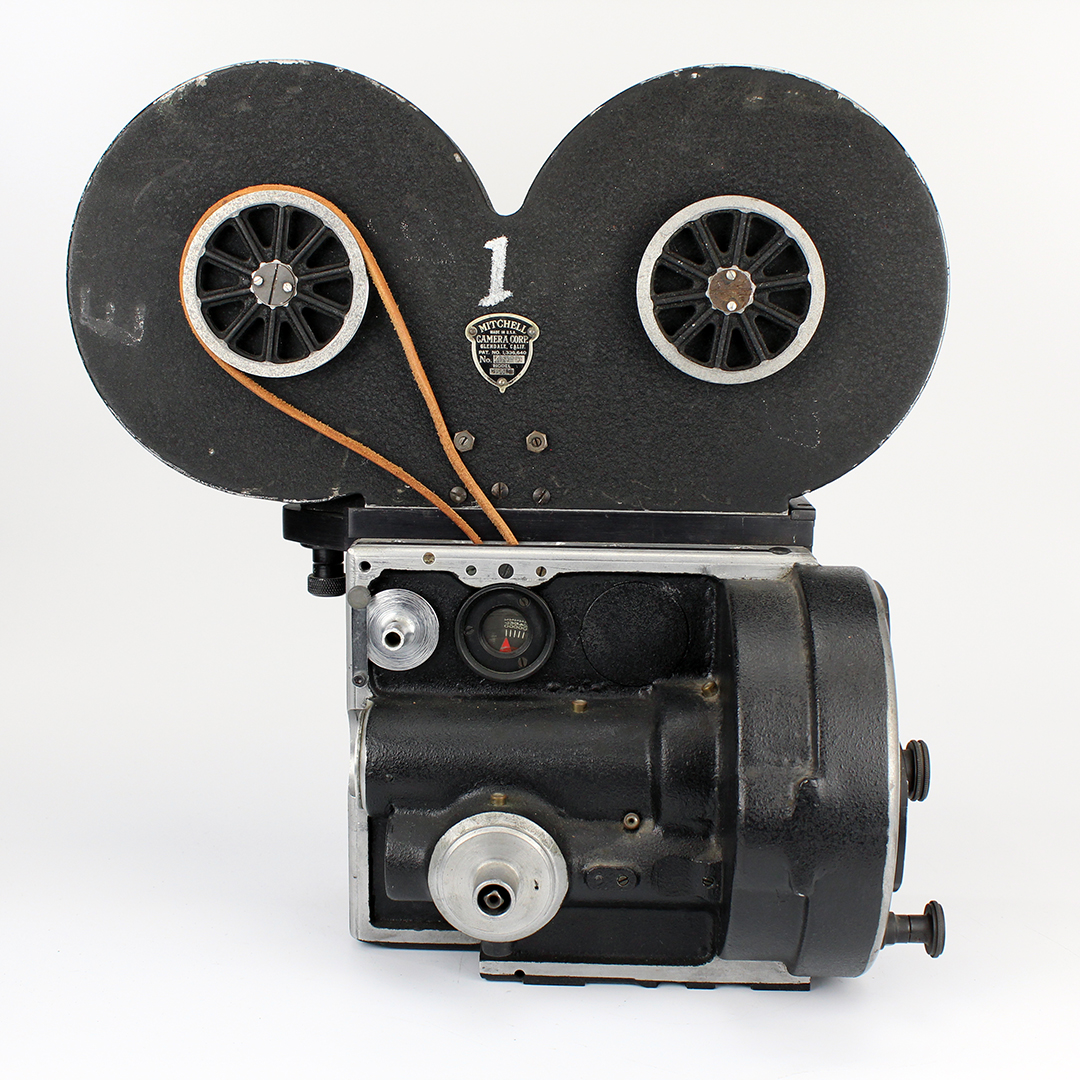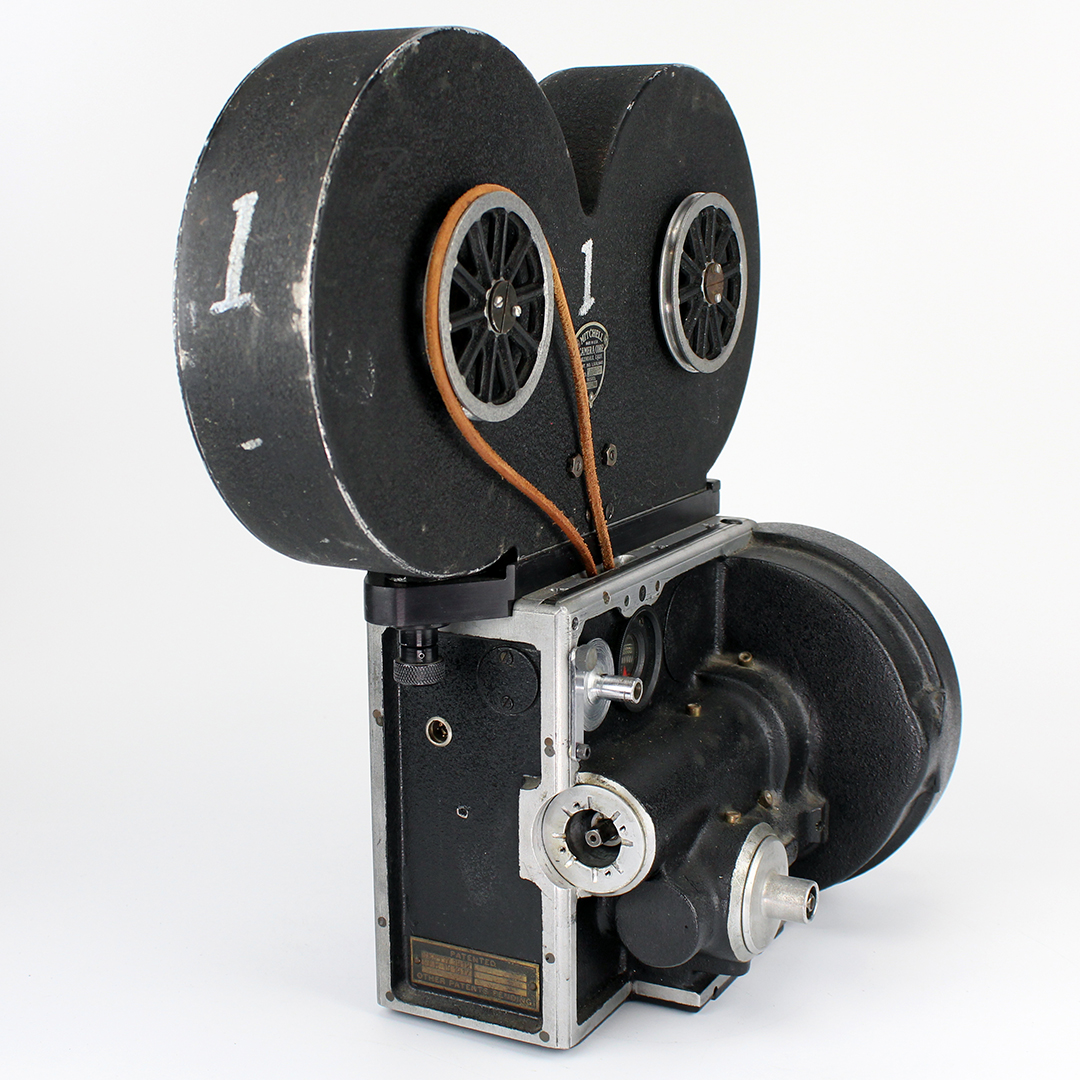
Bell & Howell 2709 #707

$6,000
Item #C10536RG




This camera comes out of the studio of matte painter and visual effects artist Rocco Gioffre where it worked on many feature films and television shows. Originally sold on November 3, 1925, Bell & Howell 2709 #707 was delivered to First National Productions on Melrose Ave. in Los Angeles, CA. First National Productions was the production arm of First National Pictures, one of the 5 major Hollywood studios in the 1920's. First National began in 1917 as the First National Exhibitor's Circuit which merged some of the largest "first-run" theater chains in the United States. This association was originally conceived to buy, produce, and distribute films to the company's newly merged theaters. In 1917, before they founded United Artists, First National signed coveted contracts with stars Mary Pickford and Charlie Chaplin to exhibit their films in First National's theaters. They also courted other big stars and directors of the day, signing deals with Frank Borzage, Jackie Coogan, Buster Keaton, Norma and Constance Talmadge, and Maurice Tourneur. In 1919, First National Exhibitors Circuit reincorporated as Associated First National Pictures, Inc. with its 5000 independent theater owners as members.
By 1924, they had expanded again with the goal of producing their own films and became First National Pictures, Inc. Originally, they operated out of the United Pictures Studio on Melrose Ave. in Los Angeles, but the building was then purchased by Famous Players-Lasky (later Paramount), and First National went in search of a new location. In 1926, they built a 62-acre studio lot in Burbank, California and continued to successfully produce their own films. In September of 1928, a majority interest in First National Pictures was purchased by Warner Brothers who also acquired the studio, which remains the Warner Brothers Studio today. This benifited Warner Brothers as it gave them access to First National's stable of theaters across the country, while First National got access to Warner Brothers' Vitaphone sound equipment. Trademarks of the two company's films were kept separate through 1936, with First National continuing to produce both A and B pictures, specializing in modern comedy, drama, and crime stories. After 1936, First National's assets were distributed among stockholders and the corporation dissolved, though some Warner Brothers films bore the combined trademarks "A Warner Brothers - First National Picture" through the early 1950's.
Of the many films made by First National Pictures, perhaps the best known is the 1925 version of Sir Arthur Conan Doyle's "The Lost World". This was the first time stop motion animation was used in a full-length feature film. The dinosaurs encountered by a group of explorers were animated by noted visual effects artist Willis O'Brien, who would go on to animate King Kong in the 1933 film. Our camera was purchased on November 3, 1925 and was active at First National Pictures into the early sound era. Many notable directors and cinematographers as well as famous actors and actresses worked for First National during this camera's tenure. Among them are noted Cinematographers Arthur Edeson ("Casablanca", "Frankenstein", and "All Quiet on the Western Front"), Ernest Haller ("Gone with the Wind" and "Rebel Without a Cause"), George J. Folsey ("Forbidden Planet", "Adam's Rib", "Meet Me In St. Louis"), and Ted D. McCord ("The Sound of Music", "The Treasure of the Sierra Madre") to name a few. Many famous directors and editors of the time were at First National during this period, including Frank Lloyd ("Mutiny on the Bounty" and "The Howards of Virginia"),Alan Dwan (Heidi", "Robin Hood [1922]", and "Sands of Iwo Jima"), and Ralph Dawson ("A Midsummer Night’s Dream [1935]", "The Adventures of Robin Hood [1938]", "Harvey", and "The High and the Mighty"). They also counted some of the era's most famous actors among their employ, including Richard Barthelmess, Mary Astor, Colleen Moore, Loretta Young, Douglass Fairbanks Jr., Walter Pidgeon, Gary Cooper, and even Babe Ruth.
While we haven't been able to associate our camera with any specific production, it was part of First National's camera department during the heyday of their studio and must have worked on many important features. The Bell & Howell 2709 35mm motion picture camera has a well-deserved reputation for capturing rock-steady images both in live action situations and when filming special visual effects. This 35mm Bell & Howell 2709 camera, serial # 707, has been modified to take standard Mitchell Magazines. One of the turret holes has also been modified for a Nikon lens mount, and a buckle trip mechanism has been added to the film path. All of the other traditional features of the classic Bell & Howell 2709 camera remain intact. A beautiful, clean camera ready for your studio or collection.
A Brief History of Bell & Howell
The Bell & Howell Company was founded in 1907 in Chicago, IL by Donald J. Bell and Albert S. Howell. Bell began his career in the movie business working as a projectionist. Howell had moved from Michigan to Chicago where he found work building and repairing projectors. In 1906, Howell patented a device that improved framing for 35mm Kinodrome projectors. Bell and Howell joined forces soon after this and formed their own company in 1907. Bell & Howell began by manufacturing, jobbing, leasing, and repairing machines for other companies in the Chicago area, helped along by Bell’s contacts in the movie projection business, and Howell’s inventive genius. After their first years in business, they began designing their own equipment. Their first original project focused on reducing the flicker of movie projectors and standardizing film sizes.
By 1908, Bell & Howell had successfully refined the Kinodrome projector to reduce flickering, and begun their work to standardize motion picture film to 35mm in width. They would no longer build or repair equipment using anything other than 35mm film after this point. By 1910, they had constructed their first camera, this canera was made of wood and leather. On an expedition to Africa, one of their cameras was heavily damaged by termites and mildew, and so they began redesigning the camera to be made of metal. In 1912, the all metal, design 2709 Standard Cinematograph motion picture camera was introduced to great fanfare. It quickly earned a reputation for precision, durability, and reliability that made it a favorite camera of the film industry for nearly five decades. The Bell & Howell 2709 was the preferred camera of industry pioneers such as Charlie Chaplin and Mary Pickford. Even after the 2709 fell out of favor as a studio production camera, its steady, reliable movement made it well suited for visual effects and optical printing work.
Sources:
- "First National Now Shooting at Full Speed", Los Angeles Times, (July 8, 1925): A9, ProQuest Historical Newspapers: Los Angeles Times (1881-1988).
- "New Stages to be Built For Studio", Los Angeles Times, (January 17, 1927): A18, ProQuest Historical Newspapers: Los Angeles Times (1881-1988).
- Will O'Byrne, "New Homes and Businesses Springing Up Around Grant Studio Near Burbank", Los Angeles Sunday Times (December 26, 1926): Part II, ProQuest Historical Newspapers: Los Angeles Times (1881-1988).
- "New Studio Plans Ready: Officials of First National Announce Work to Start Immediately on Burbank Buildings", Los Angeles Times (March 15, 1926): A1, ProQuest Historical Newspapers: Los Angeles Times (1881-1988).
- "First National Productions, Inc. has just been organized...", Bakersfield Morning Echo (April 6, 1924): 8, ProQuest.
- "Burbank Get Costly Studio: First National Chooses Site for Huge Edifice", Los Angeles Times (January 28,1926): A1, ProQuest Historical Newspapers: Los Angeles Times (1881-1988).
- International Directory of Company Histories, Vol. 29. (1999), quoted in D.D. Teoli Jr., "Bell and Howell Company - Company Profile, Information, Business Description, History, Background Information on Bell and Howell Company" View source.
- Earl Theisen, "The Story of Bell & Howell," The International Photographer, (October 1933): 6-7 and 24-25, View source.
- "Albert Summers Howell Elected to Honorary Membership in A.S.C." American Cinematographer, (August 1929): 3-4, View source.
